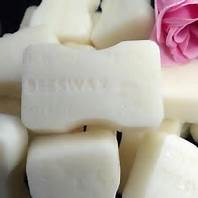Preservatives-Cosmetics






Preservatives are chemicals which are added to personal care products to prevent or control the growth of microbes in the product. Several preservatives have dual roles, doubling up as deodorants, antimicrobials and antidandruff agents. By their very nature, preservatives are designed to kill cells or prevent them from multiplying. They are, therefore, potentially harmful cosmetic ingredients, and the vast majority of preservatives have restrictions on their use. Since there are also strict rules concerning levels of microbial infection in personal care products, virtually all products you buy will contain at least one preservative, making it almost impossible to avoid using potentially harmful chemicals on your body.
It's a Fact
Formaldehyde is a cheap and commonly used preservative in products like budget or family shampoo, shower gel, family bubble bath and hand wash. At one time, before refrigeration, it was added to milk to kill the acid-producing bacteria that turned it sour. It failed to kill other, more harmful bacteria, resulting in dangerously contaminated milk which appeared to be fresh and palatable. Formaldehyde's use in milk has long since been banned, and this throws doubt on its effectiveness as a cosmetic preservative. It is also a cancer suspect and is banned from cosmetics in Sweden and Japan. Maybe you should choose anothjer product.
The whole mof the product must be protected from microbial contamination. Since many products are emulsions consisting of oily droplets dispersed throughout a watery base, at least one water soluble, and one oil-soluble preservative must be added in order to insure all microbes are killed, it is common to find at least two of each type of preservative in a product.
Benzoates such as methylparaben, etjyl paraben, propylparaben and butylparaben are common preservatives found in a wide range of cosmetics and toiletries, including products for babies. This is a favoured range of preservatives because , as you read the list from left to right, they become less soluble in water and more soluble in oils, allowing every part of an emulsion to be protected. Methylchloroisothiazolinone and methylisothiazolinone are also commonly found in personal care products.
Mercury compounds are sometimes used as preservatives in eye make-up and eye make-up remover. Despite its ability to penetrate human skin, its neurotoxic effects, and its ability to collect in body tissues, the use of mercury is permitted because it is exceptionally effective at killing Pseudomonas aeruginosa, a microbe that can cause severe eye infections and blindness.
There are very few natural preservatives available to cosmetic manufacturers, and those that are used, are effective against only a small range of microbes. It is possible to buy cosmetics and toiletries that are preservative free but they are usually expensive, must be stored in the refrigerator once opened, and discarded after a certain period of us.
Reference:Cosmetics Unmasked: Dr. Stephen & Gina Antczak
Articles-Latest
- Skin tags: Why they develop, and how to remove them
- So That’s Why Your Skin Gets Crepey As You Get Older
- Eye Infection from False Eyelashes
- Teeth stain removal and whitening solutions
- Benefits of collagen for skin
- Why vitamin E should be part of your skincare regime
- Can gray hair be reversed?
- Hair loss affects 1 in 10 women before the menopause – here’s how to treat it
- Conscious ageing and Black skin: What happens when Black does crack?
- Your skin color may affect how well a medication works for you — but the research is way behind
- The C word Cancer
- Astringents
- How does light therapy work? The science behind the popular skincare treatment
- The Most Offensive Fashion Police Criticisms of All Time
- Everything you need to know about lip filler migration, as told by the experts
- Pig semen and menstrual blood – how our ancestors perfected the art of seduction
- Everything you need to know about benzoyl peroxide
- We've bleached, relaxed, and damaged our hair to make ourselves look more white
- Will this be the year that facial filler is cancelled?
- Shock of the old: 10 painful and poisonous beauty treatments
Cosmetic ingredients
LOGIN
Who's On Line
We have 79 guests and no members online
Articles-Most Read
- Home
- White Bees Wax
- Leucidal
- Cosmetic Preservatives A-Z
- Caprylyl Glycol
- Cosmetics Unmasked - How Safe Are Colorants?
- Cosmetics Unmasked - Choosing Ingredients
- Cosmetics Unmasked - Colorants And Fragrances
- EcoSilk
- Toxic Beauty - Who's Looking At Cosmetics?
- Cosmetics Unmasked - Fragrances
- Microbes and Cosmetics
- Chemicals Lingering In The Environment
- Yellow Bees Wax
- Microbes and Safety Standards
- Potassium Sorbate
- Toxic Beauty - Hazardous To Your Health
- Synthetics In Cosmetics - The Industry Fights Back
- What's Happening in the USA - Cosmetic Regulations - Toxic Beauty
- Fresh Goat's Milk Soap
- Active Ingredients
- Cosmetics Unmasked - Listing Cosmetics
- Toxic Beauty - Cocktails and Low Doses
- Natural Waxes A-Z
- Natural Butters A-Z



